Udayana University Co-Assistant Students Publish in Scopus Q1 Journal
In a remarkable achievement, medical co-Ass students from the Faculty of Medicine, Udayana University, have successfully published their research in a prestigious international journal. Bryan Gervais de Liyis, Anak Agung Istri Kosalya Arini, and Chrysanta Paramitha Karuniamaya have made their mark in the Scopus Q1 Journal of Neurology (Impact Factor 6.0) with their meta-analysis titled "Risk of Intracranial Hemorrhage in Brain Arteriovenous Malformations: A Systematic Review and Meta-Analysis." Their advisors include dr. Nyoman Angga Krishna Pramana, Sp.N (K), FINR, FINA, Dr. dr. Kumara Tini, Sp.N(K), FINS, FINA, and Dr. dr. I Putu Eka Widyadharma, M.Sc, Sp.N (K) from the Department of Neurology, Udayana University, Prof. Dr. I.G.N.G Ngoerah General Hospital and Prof. Dr. dr. Ismail Setyopranoto, Sp.N (K) from the Department of Neurology, Faculty of Medicine, Gadjah Mada University, Dr. Sardjito General Hospital.
Their study delves into brain arteriovenous malformations (bAVM), a congenital structural disorder characterized by the absence of capillary blood vessels within the intricate network of cerebral arteries and veins. Their research aims to analyze the relationship between various AVM morphological features, including size, volume, prior hemorrhage, and hemodynamic status, with the risk of future hemorrhages. The research team found that initial hemorrhage presentation, venous drainage, and associated aneurysms increased the risk of secondary hemorrhages. Conversely, higher Spetzler-Martin grades and larger malformation volumes reduced the risk. Subgroup analyses revealed specific risk factors for certain patient groups and interventions. Kaplan-Meier analysis indicated increased hemorrhage risk for initial hemorrhage presentation, while cumulative survival was higher in intervened patients. These findings provide crucial insights for the management and treatment of bAVMs, emphasizing the need for careful evaluation of individual patient characteristics to anticipate and prevent the risk of intracranial hemorrhage.
This success reflects the exceptional commitment of neurovascular experts and strengthens Udayana University's reputation as an academic institution promoting research and innovation in the medical field. Their contribution significantly enhances the understanding and management of neurovascular diseases globally, illustrating Indonesia's commitment to advancing medical knowledge on a global scale. The achievements of the research team not only bring pride to those involved but also reinforce Indonesia's position as a key player in neurovascular research on the international stage. The article is accessible at the following link: https://doi.org/10.1007/s00415-024-12235-1
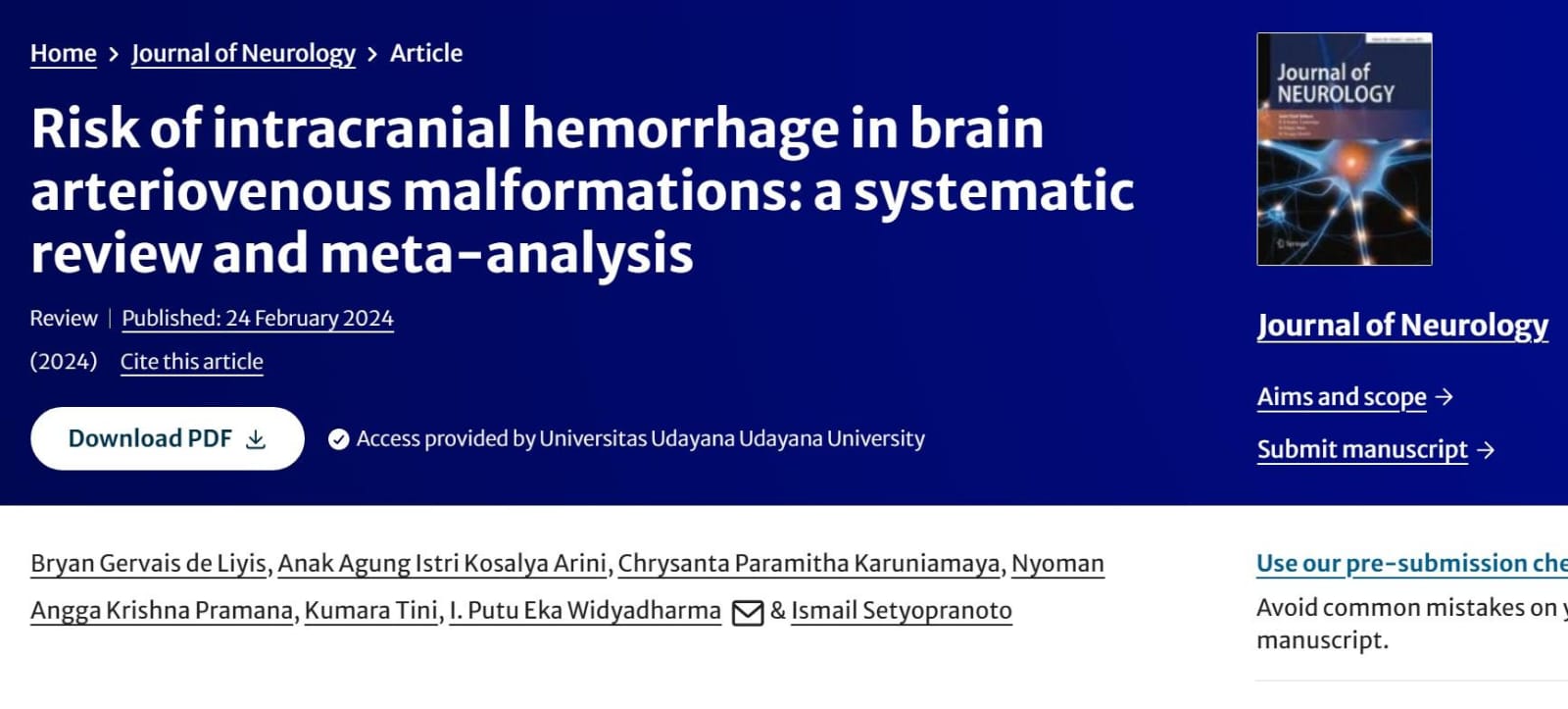
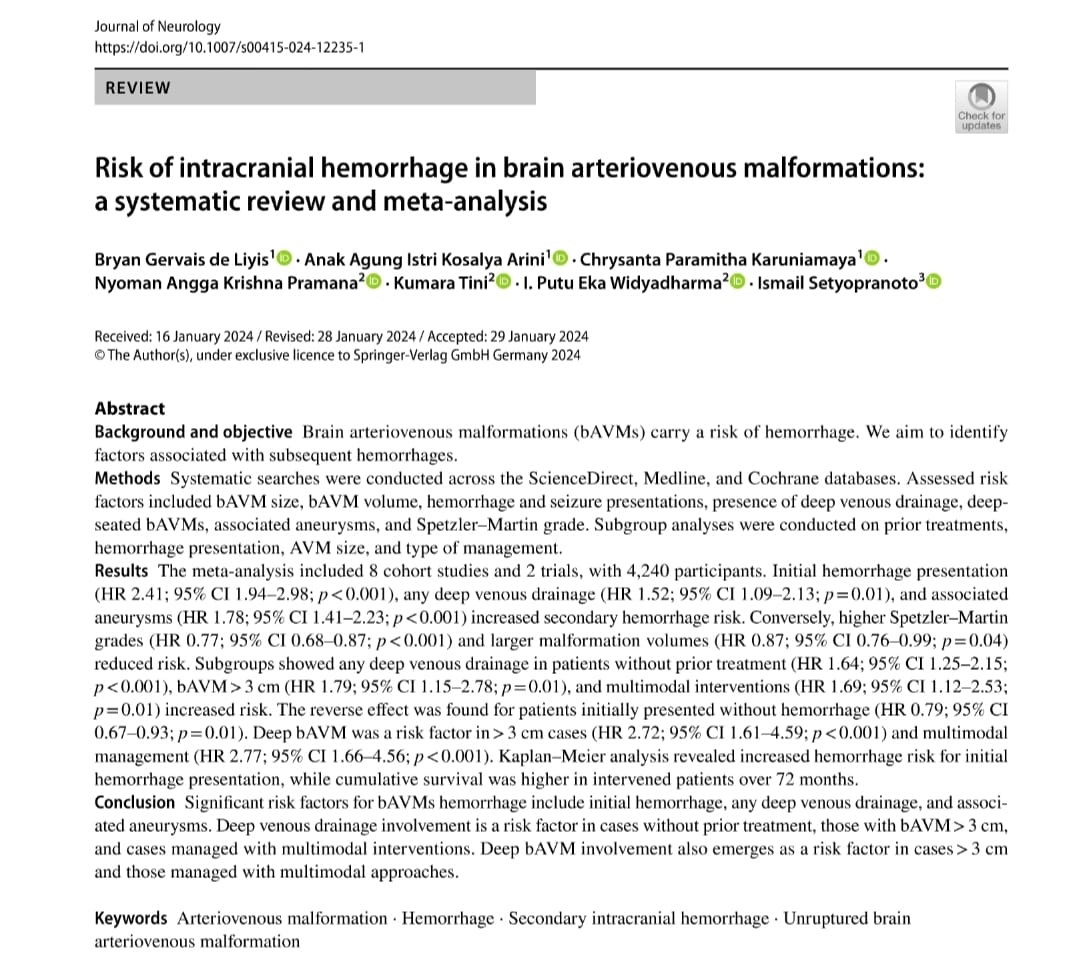
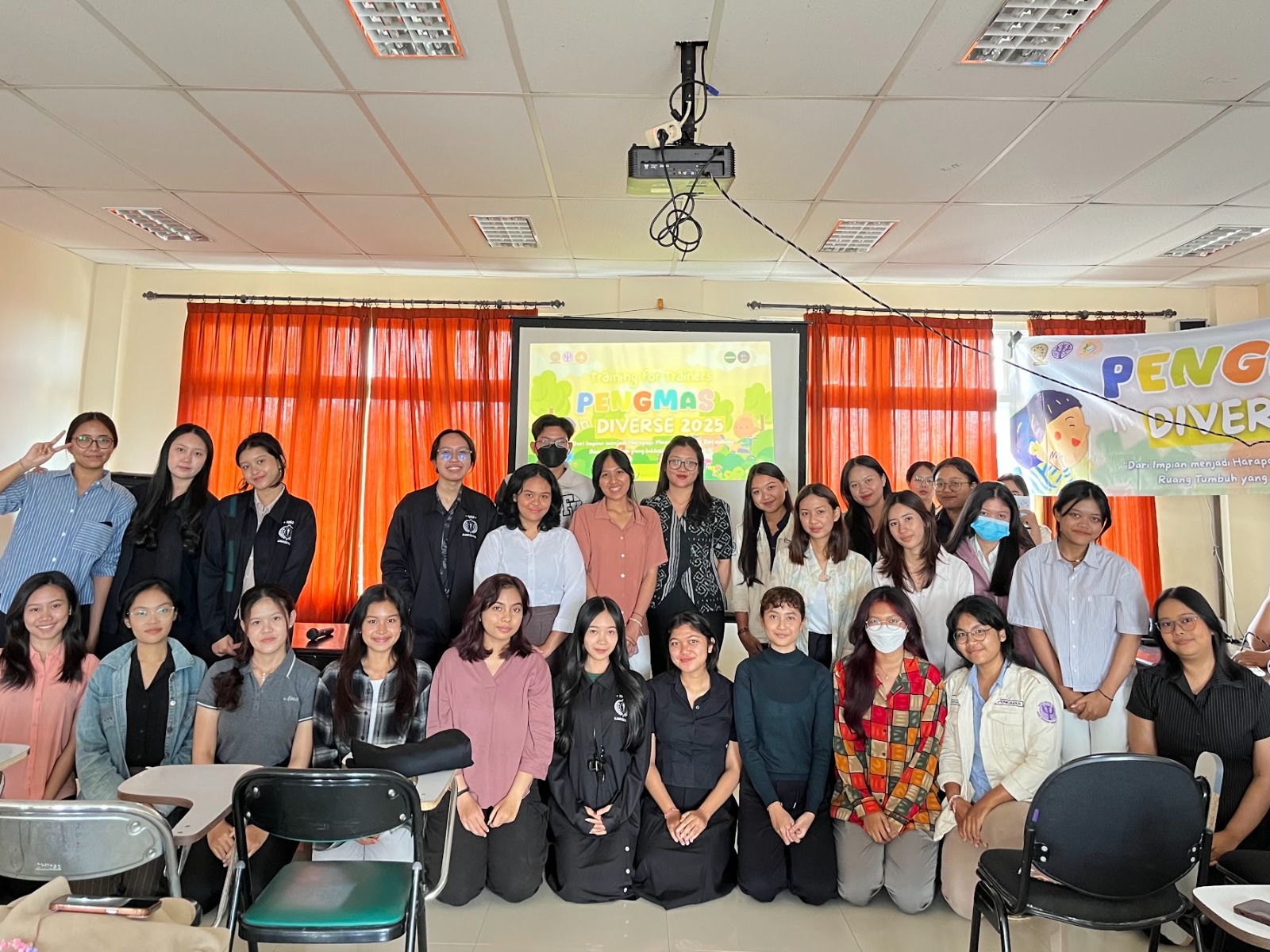
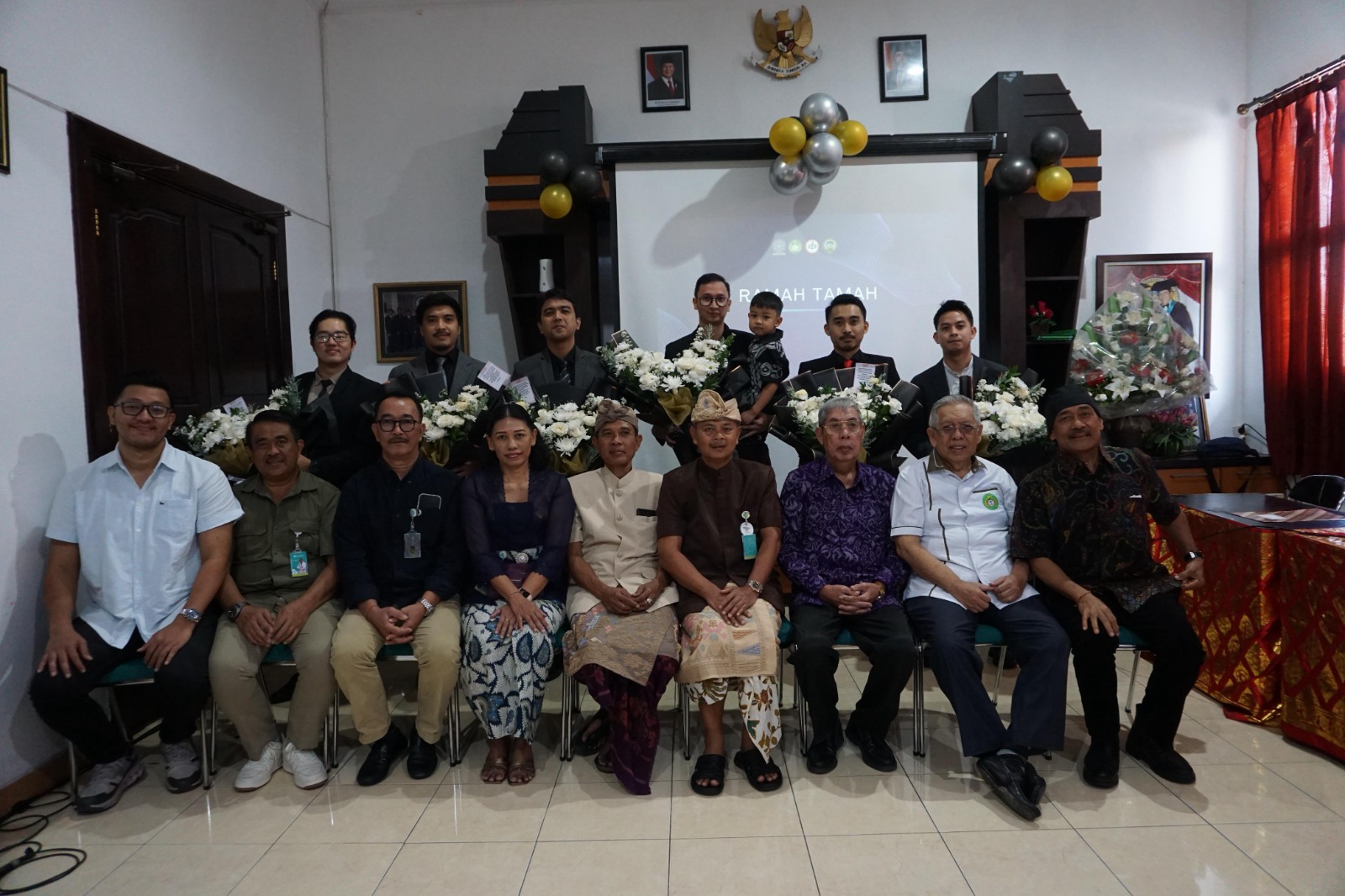
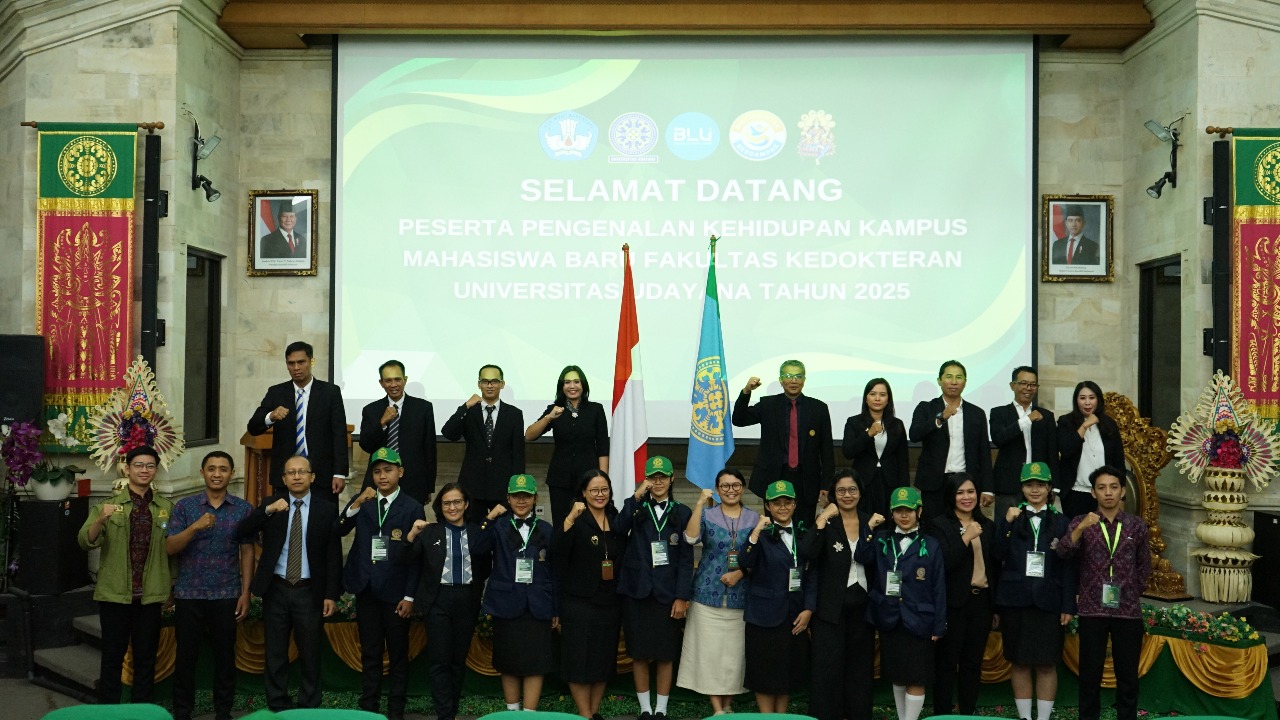
UDAYANA UNIVERSITY